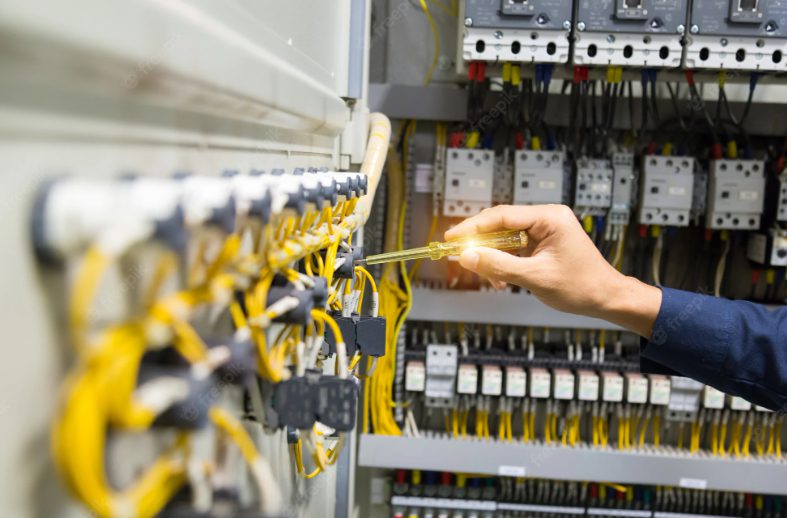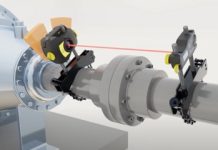An Electrical Panel is a device that controls electricity in a home. It includes components like Relays, Circuit breakers, Contactors, and Consumer units Electrical Panel If you don’t know how to use your panel, you can get help from a licensed electrician. You should also be able to find out the capacity of your panel by collecting information about your load.
Relays
Relays in an electrical panel control the flow of electrical current. Each relay has a spring-loaded armature and a fixed portion called a yoke. The armature closes the air gap between the coil and the yoke to complete the circuit. The yoke and armature are connected by springs, and when they are de-energized, they reset the contacts.
The contacts on a relay are electrically conductive pieces of metal. When the contacts are open, current flows through them, and this current is measured in Mega-Ohms. When the contacts are closed, the resistance of the circuit falls below zero. This resistance is similar to that of a FET.
Different types of relays can be used in different settings. Some are timed relays, which are useful when multiple components need to be powered at different intervals. They are timed to prevent power surges and power failures by de-energizing the circuit after a specific time.
Relays in an electrical panel can be single-pole or double-pole. Single-pole contacts can carry current through a single circuit, while double-pole contacts can control two circuits at the same time. The maximum number of poles for a relay is 12 depending on its design. Relays can also be single-throw or double-throw.
The use of relays is not without its disadvantages. They produce high back emf when turned off, and the coils generate self-induced magnetic fields. This high voltage can damage semiconductor devices. Thankfully, this is avoided with the use of a reverse biased diode.
Contactors
There are several different types of contactors used in an electrical panel, and some contactors are more suited to some applications than others. For example, a NEMA contactor is too large to fit inside a small enclosure, while an IEC contactor is too small for a larger enclosure. In either case, you’ll want to look for a contactor that meets your needs and can withstand the voltage and current that your panel will need.
Contactors can be used to control the flow of electricity in a residential or commercial environment, as well as in industrial settings. Not only do they control the flow of electricity, but they are also a safety feature that can prevent power outages. They can even be used outdoors as a backup power source. To ensure that your electrical panel’s contacts are working properly, you should keep them updated regularly.
One type of contactor is the metal strip contactor, which is used to turn electric motors ON and OFF. This contactor consists of a metal strip that is pushed up and down by a lever. The advantage to using this contactor is that it’s easy to install, and doesn’t require much electrical knowledge.
There are many types of contacts that are used in electrical panels. Typically, they are chosen based on the maximum amperage that they can handle. It would be a waste of space to mount a power pole in a small control circuit, so many contactors have auxiliary contacts that mount to the side or top.
Circuit breakers
Circuit breakers in an electrical panel are devices that automatically interrupt circuits when they detect a fault. These devices can be either manual or automated, and they use varying levels of mechanical energy to open their contacts and interrupt the flow of electricity. The smaller ones are typically operated by a lever on the panel’s front, while the larger breakers may use electric motors or solenoids.
Some electrical panels have several rows of breakers, each with a different function. For example, a panel may have breakers categorized as arc fault circuit interrupters, which are designed to prevent electrical fires and electrocution. Another way to organize electrical breakers in a panel is to create sub-panels for individual circuits. A main circuit breaker box has two rows, which are connected to “hot bus bars” or hot and neutral circuit wires. Current leaves the main panel through the hot wires and returns through the neutral bus bar.
If you’re unsure about which breakers you have in your electrical panel, you should first check the installation instructions on the panel itself. Then, look at the panel’s label for any recommendations for replacement circuit breakers. Usually, the new breaker should be the same brand and voltage as the old one.
There are two rows of numbered switches on the circuit breaker panel. Each switch controls a specific circuit in your home. By default, breakers are set to be ON. If the breaker is set to OFF, power cannot flow through the circuit. The panel’s door panel will hold a paper card listing information for each switch.
Consumer unit
A consumer unit is the main distribution box for electricity, and contains control elements for electrical protection. In residential applications, it is located between the electricity meter and any electrical devices. It is responsible for all protection operations. There are many different types of consumer units, and you should know which type is right for your home.
There are three basic types of consumer units. Each type has its own specific characteristics. A high integrity unit is usually used in larger properties, and it offers complete circuit separation and independent RCBOs. It also is used as a sub-board to the main distribution panel. A dual-RCD consumer unit is also common.
If your consumer unit is tripping often, it may be a sign that your electrical system is running into trouble. It’s a good idea to contact an electrician to check the consumer unit. It might be a minor issue, but a quick repair can keep you and your property safe.
While plastic consumer units are common in homes across the UK, they are not as safe as metal clad units. The IET recommends inspecting the unit and associated switchgear to ensure that they’re functioning properly. This inspection involves taking into account the age, condition, and positioning of the unit to ensure its safety.













